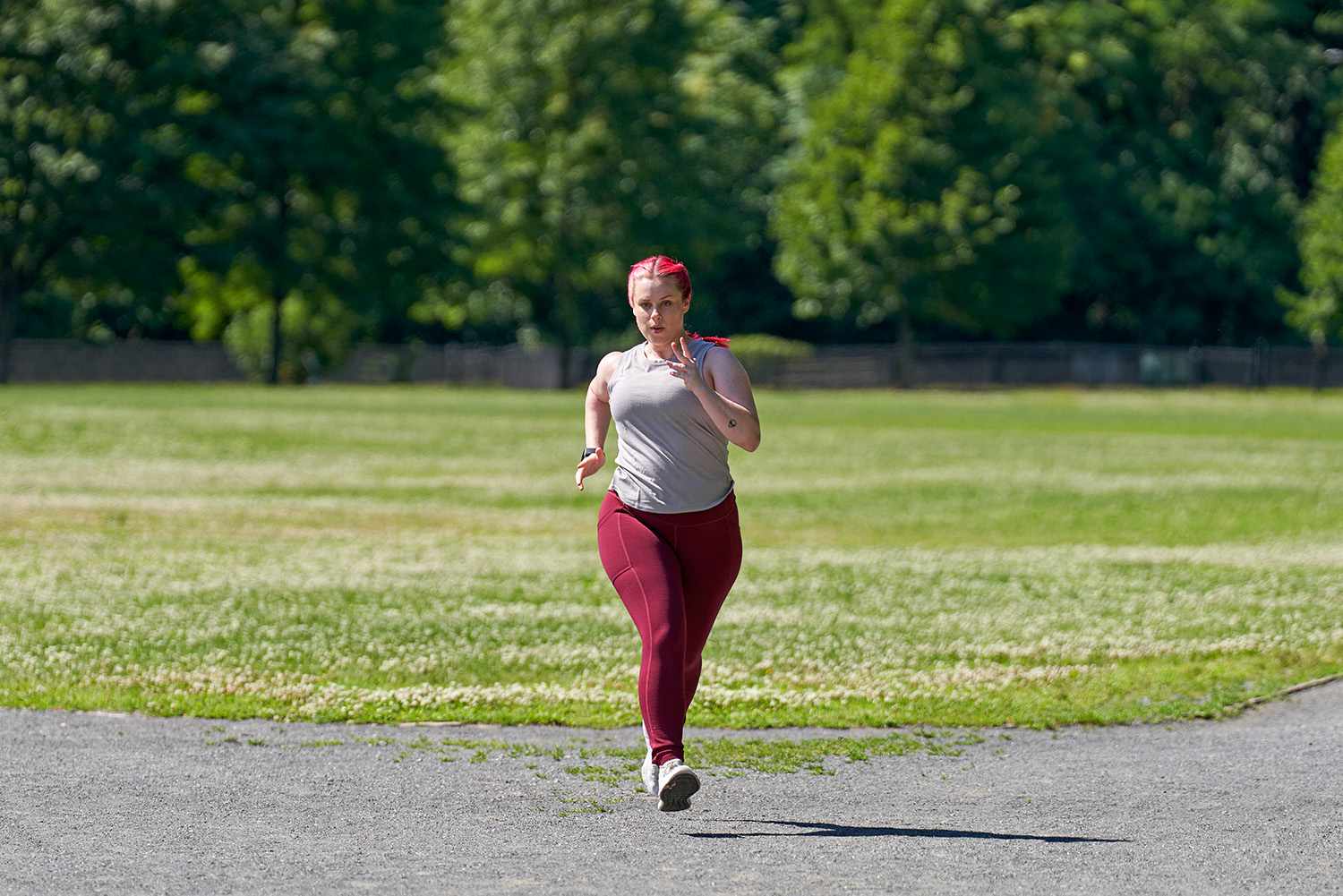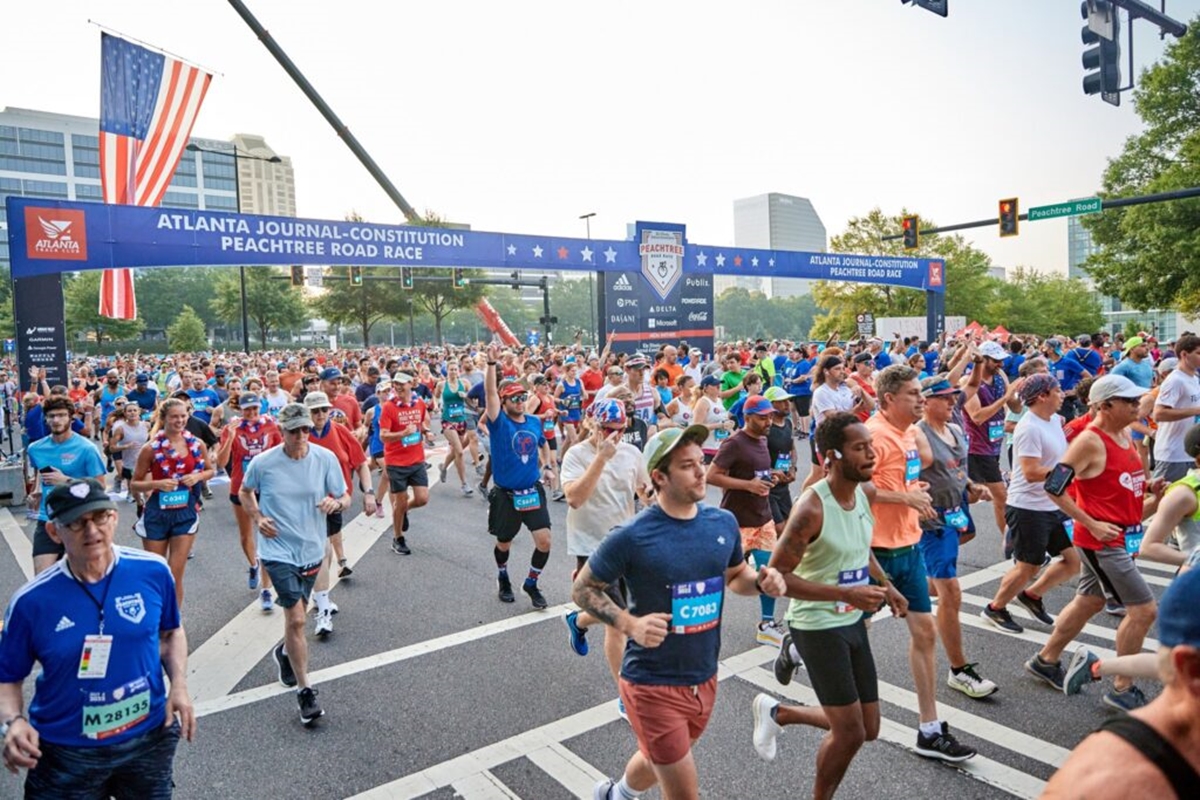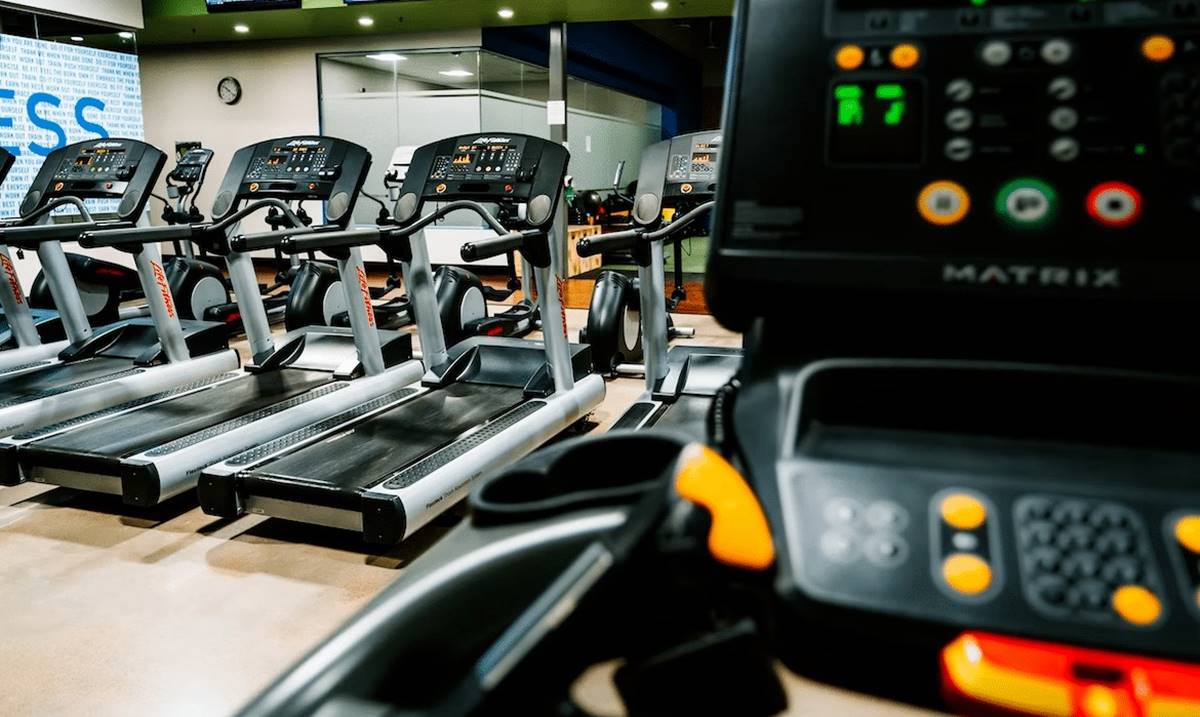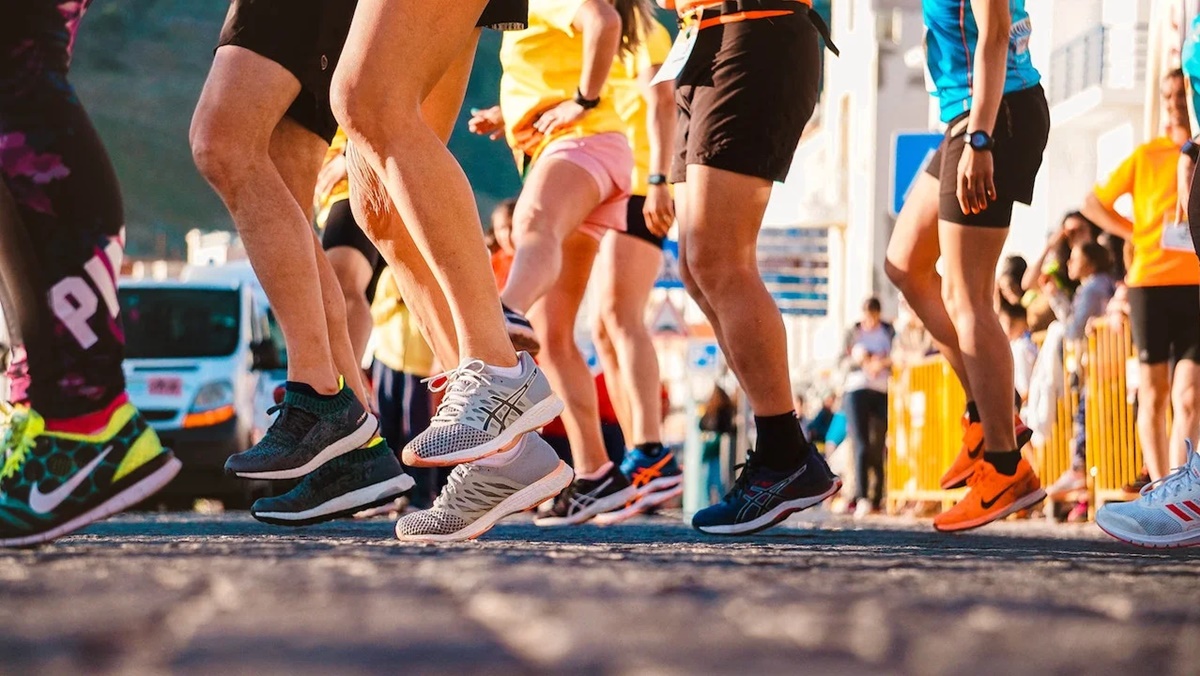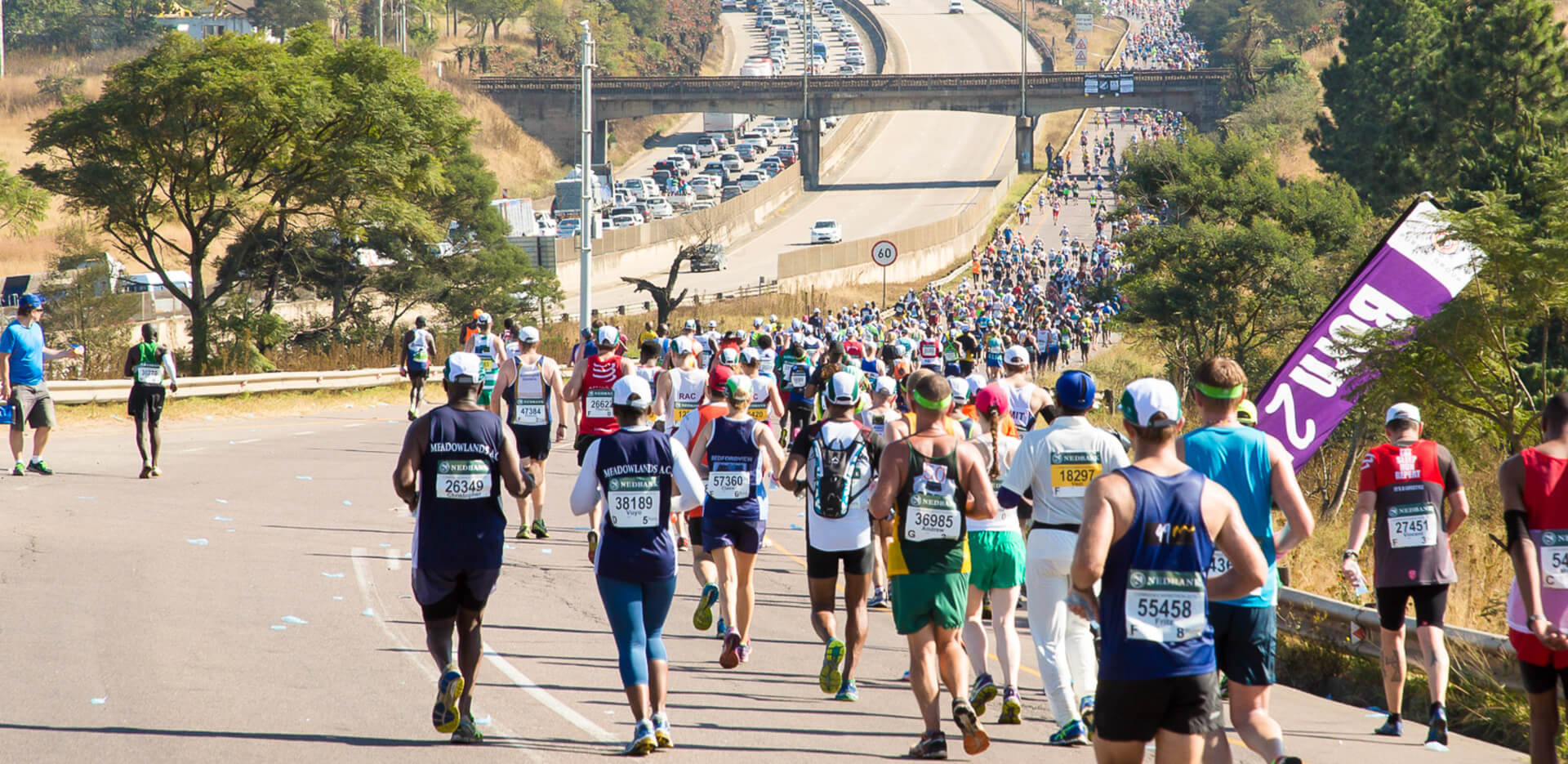

Featured
How Many Km Is Marathon
Modified: January 22, 2024
Learn how many kilometers is a marathon with this featured article. Discover the exact distance of this iconic race and get ready to lace up your running shoes!
Introduction
Welcome to the world of marathons! Whether you are an aspiring runner or simply curious about the distance, this article will provide you with a comprehensive understanding of marathons and how many kilometers exactly make up this iconic race.
Marathons are one of the most challenging and celebrated events in the realm of running. They test the physical endurance and mental strength of participants as they aim to complete the grueling 42.195-kilometer course. Every year, thousands of dedicated athletes and enthusiasts from around the globe push themselves to the limit to conquer the marathon distance.
But why precisely 42.195 kilometers? Where did this specific distance come from? To answer these questions, we must delve into the history of the marathon and explore the factors that have shaped its standard distance.
Join us as we unravel the fascinating world of marathons and discover the incredible feats achieved by runners in this ultimate test of human endurance. Whether you’re considering running a marathon yourself, cheering on a friend, or simply interested in the sport, this article will provide you with all the insights you need.
So, put on your running shoes and let’s dive into the captivating world of the marathon!
What is a Marathon?
A marathon is a long-distance running race with a standardized distance of 42.195 kilometers (26.2 miles). It is typically held as a road race, although variations such as trail marathons also exist. The race is named after the legendary run of the Greek soldier Pheidippides, who, according to ancient myth, ran from the city of Marathon to Athens to deliver a message of victory.
Marathons are known for their demanding nature and require a high level of physical fitness and mental resilience. The race attracts a diverse range of participants, from professional athletes seeking to set records to amateur runners raising money for charity or personal achievement.
The popularity of marathons has soared over the years, with numerous events held worldwide. Participants train rigorously for months leading up to the race, gradually building up their endurance and preparing both physically and mentally for the challenges ahead.
Marathons are not only about the physical feat of completing the distance; they also embody a sense of community, camaraderie, and personal triumph. Runners often experience a range of emotions throughout the race, from the nerves and adrenaline at the starting line to the euphoria and sense of achievement as they cross the finish line.
Marathons also serve as a platform to raise awareness and funds for various causes and charities. Many participants choose to run in support of a charitable organization, adding purpose and meaning to their running journey.
As the marathon continues to evolve, new formats have emerged to cater to different interests and abilities. Apart from the traditional marathon, variations such as the half marathon (21.1 kilometers or 13.1 miles) and ultra-marathons (races longer than the standard marathon distance) have gained popularity, offering a range of challenges for runners to tackle.
Now that we have a basic understanding of what a marathon entails, let’s delve into the intriguing history behind this iconic race and how it came to have a standardized distance.
The History of the Marathon
The origin of the marathon can be traced back to ancient Greece, where it carries a rich historical and mythological significance. The story that inspired the modern marathon dates back to 490 BCE, during the Battle of Marathon between the Greeks and the Persians.
According to legend, the Greek army achieved a decisive victory in the battle. To relay news of the victory to Athens, a soldier named Pheidippides was tasked with running from the battlefield to the city, a distance of approximately 40 kilometers (24.8 miles). Pheidippides completed this astonishing feat and announced the victory before collapsing and passing away from exhaustion.
This tale of courage and endurance caught the imagination of modern sporting enthusiasts, and the first organized marathon race appeared during the inaugural modern Olympic Games in 1896. The race was included to commemorate the feat of Pheidippides and honor the origins of the marathon.
The first ever marathon race covered a distance of approximately 40 kilometers, retracing the route from Marathon to the Panathenaic Stadium in Athens. Spyridon Louis, a Greek runner, emerged as the victor, etching his name into history as the first Olympic marathon champion.
Despite the initial success of the marathon race at the Olympics, the exact distance of the event was not standardized until the 1908 London Olympics. In this particular race, the distance was lengthened to accommodate the royal family’s request to start the race from Windsor Castle and finish in front of the royal box at the Olympic Stadium.
The new course measured 42.195 kilometers (26.2 miles), and it became the official distance for marathons moving forward. The distance was accepted universally, and it has remained the standard for marathon races ever since.
Over the years, the marathon has grown in popularity, attracting participants and spectators from around the world. Major marathons, such as the Boston Marathon, New York City Marathon, and Berlin Marathon, have become iconic events, drawing elite runners and enthusiasts alike. These races showcase the culmination of training, dedication, and the spirit of competition.
The history of the marathon is not just about the races themselves, but also the incredible stories of individual runners who have overcome personal challenges and made their mark on the sport. From the legendary achievements of athletes like Abebe Bikila, who won the Olympic marathon barefoot in 1960, to the determination and resilience displayed by everyday runners, the marathon continues to inspire and captivate us.
Now that we understand the history behind the marathon, let’s explore the standard distance of this iconic race and how it relates to other units of measurement.
Standard Marathon Distance
The standard distance of a marathon is 42.195 kilometers (26.2 miles). This specific distance was established during the 1908 London Olympics and has since become the universally accepted measurement for marathon races.
But why the seemingly arbitrary number of 42.195 kilometers?
During the 1908 London Olympics, the race organizers wanted the course to start at Windsor Castle and end in front of the royal box at the Olympic Stadium. As a result, the course length had to be extended from the original 40 kilometers. The additional 2.195 kilometers were added to accommodate this change.
The exact measurement, 42.195 kilometers, was the distance from Windsor Castle to the Olympic Stadium via the Queen Victoria Memorial. To ensure accuracy, surveyors measured the course precisely, and this distance became the new standard for marathon races.
Since then, the distance of 42.195 kilometers (26.2 miles) has been embraced by marathon runners worldwide. It has become a challenging benchmark that runners aim to conquer, testing their endurance and mental fortitude.
Running a marathon is no small feat. The distance demands months of dedicated training and preparation. Every step of the race requires physical and mental strength, as runners push through fatigue and challenges to reach the finish line.
While 42.195 kilometers may seem like a daunting distance, the sense of accomplishment in completing a marathon is immeasurable. Crossing the finish line after hours of hard work and determination is a triumph that stays with runners for a lifetime.
It’s important to note that the 42.195-kilometer distance is specific to standard marathon races. There are variations such as ultra-marathons, which exceed the standard distance, and half marathons, which cover half the distance of a full marathon. These variations offer different challenges and attract runners with varying levels of experience and goals.
Now that we understand the standardized distance of a marathon, let’s explore how this distance measures up against other units of measurement, particularly the conversion from miles to kilometers.
Conversion from Miles to Kilometers
For many people accustomed to using the imperial system of measurement, understanding the distance of a marathon in kilometers may require some conversion. The standard marathon distance is 42.195 kilometers (26.2 miles), and being able to convert between miles and kilometers can help provide better context and comprehension.
The conversion factor between miles and kilometers is 1 mile = 1.60934 kilometers. This means that to convert miles to kilometers, you simply need to multiply the number of miles by 1.60934.
Using this conversion factor, the 26.2-mile distance of a marathon can be converted to kilometers as follows:
26.2 miles × 1.60934 kilometers per mile ≈ 42.195 kilometers
Conversely, to convert kilometers to miles, you divide the number of kilometers by 1.60934. For simplicity, this can be rounded to the nearest tenth of a mile.
Understanding the conversion between miles and kilometers allows individuals to better visualize the distance of a marathon and compare it to other familiar measurements. This is particularly helpful for runners when determining training routes, estimating pace, or comparing race distances in different units of measurement.
It’s worth noting that most countries worldwide use the metric system and measure distances in kilometers. However, the use of miles is still prevalent in some countries, including the United States and the United Kingdom.
Having an understanding of both systems of measurement can be advantageous, not only for marathon runners but also for travelers and individuals who may encounter measurements in either miles or kilometers in different contexts.
Now that we have explored the conversion from miles to kilometers and its relevance to understanding marathon distances, let’s delve into the factors that can affect the precise length of a marathon course.
Factors Affecting Marathon Distance
While the standard distance of a marathon is 42.195 kilometers (26.2 miles), it’s important to recognize that there can be slight variations in the length of different marathon courses. Several factors can influence the exact distance runners cover during a marathon race:
- Course Certification: To ensure accuracy and adherence to the standard distance, marathon courses are often certified by national or international governing bodies. These organizations carefully measure and certify the course to ensure it meets the required distance. However, even with certification, small variations may occur due to factors such as road conditions and measurement limitations.
- Route Design: The route layout can also impact the length of a marathon course. Factors such as turns, elevation changes, and uneven terrain can add or subtract a few meters from the overall distance. Additionally, variations in the placement of the start and finish lines can further affect the course length.
- Weather Conditions: Extreme weather conditions can impact a runner’s pace and overall race time. High heat, strong winds, or heavy rain can make the course more challenging, potentially affecting the distance covered. In such cases, organizers may make adjustments to the course to ensure runner safety.
- Runner Positioning: In larger marathons with a large number of participants, the distance covered by individual runners can vary slightly due to positioning within the pack. Runners on the outside of turns may need to cover a slightly longer distance than those on the inside. However, the impact of this factor is minimal.
- Measurement Technology: The accuracy of measurement technology used to determine the course distance can also affect the overall measurement. The use of GPS devices, wheel-based measurements, or other techniques can impact the precision of the recorded distance.
Despite these variations and influencing factors, race organizers strive to ensure that marathon courses adhere as closely as possible to the standard distance. The variations in course length, if any, are usually minimal and do not significantly impact the overall experience or challenge of running a marathon.
It’s crucial for marathon runners to understand these factors that can affect the course distance and be aware that slight variations may exist. However, the focus of a marathon should ultimately be on the personal achievement, the journey, and the incredible sense of accomplishment when crossing the finish line.
Now that we have explored the factors that can affect the marathon distance, let’s turn our attention to some of the famous marathons held around the world.
Famous Marathons Around the World
Marathons are held in various locations worldwide, attracting thousands of participants and spectators alike. These events showcase the spirit of competition, celebrate human endurance, and offer a unique way to explore different cities and landscapes. Here are some of the most famous marathons around the world:
- Boston Marathon: Held annually on the third Monday of April, the Boston Marathon is one of the oldest and most prestigious marathons. It is known for its challenging course, historic significance, and stringent qualifying standards. The race attracts elite runners from around the world and is also a beloved event for local participants and spectators.
- New York City Marathon: The New York City Marathon is one of the largest and most popular marathons globally. It takes place in November and attracts over 50,000 participants from all walks of life. The course winds through all five boroughs of New York City, offering runners a diverse and iconic experience as they make their way to the finish line in Central Park.
- Berlin Marathon: Renowned for its flat and fast course, the Berlin Marathon is a favorite among elite runners aiming to set personal bests or break world records. The race takes place in September and is known for its friendly atmosphere and enthusiastic crowd support. The Berlin Marathon has witnessed several record-breaking performances over the years.
- London Marathon: Founded in 1981, the London Marathon has grown into one of the most popular mass participation events in the world. It is known for its festive atmosphere, iconic landmarks along the course, and enthusiastic crowds. Runners from all over the globe vie for a spot in this prestigious race, held in April.
- Tokyo Marathon: The Tokyo Marathon is one of the six World Marathon Majors and attracts a large number of international participants. Known for its organized and efficient logistics, the race showcases the unique blend of traditional and modern aspects of Tokyo. The event takes place in February and is a highlight of the city’s running calendar.
- Chicago Marathon: Held annually in October, the Chicago Marathon is renowned for its flat and fast course, making it popular among runners aiming to achieve personal records. The race takes participants through the diverse neighborhoods of Chicago, offering stunning views and enthusiastic support from spectators.
These marathons represent just a fraction of the many iconic races held around the world. From the breathtaking views along the Great Wall Marathon in China to the stunning coastal route of the Big Sur International Marathon in California, each marathon provides a unique experience and a chance to explore different cultures and landscapes.
Whether you’re a seasoned marathon runner or simply a passionate spectator, participating in or witnessing one of these famous marathons can be an unforgettable experience. The excitement, sense of community, and celebration of human potential make these events truly remarkable.
Aspiring marathoners often set their sights on these prestigious races, working tirelessly to qualify or secure a coveted spot through charity or lottery entries. These marathons are a testament to the power of endurance sports and the remarkable achievements of individuals striving for their personal best.
Now that we’ve explored some of the famous marathons across the globe, let’s shift our focus to the essential aspects of training for a marathon.
Training for a Marathon
Training for a marathon is a long and challenging journey that requires commitment, discipline, and careful planning. Whether you’re a seasoned runner or a beginner aiming to tackle your first marathon, following a well-designed training program is essential to ensure you are physically and mentally prepared for the race.
Here are some key considerations when training for a marathon:
- Build a Base: Prior to starting a marathon training program, it’s important to have a solid running foundation. Gradually increase your mileage over time, focusing on building endurance and strengthening your body.
- Set Realistic Goals: Assess your current fitness level and set realistic goals for your marathon. Consider factors such as your previous running experience, desired finish time, and overall fitness. Having clear goals will help you stay motivated and track your progress.
- Follow a Training Plan: Find a structured marathon training plan that suits your level and schedule. A well-designed plan will include a combination of short and long runs, cross-training, strength training, and rest days to help you gradually increase your mileage and improve your fitness.
- Consistency is Key: Stick to your training schedule as much as possible. Consistency in training allows your body to adapt and become stronger. Be sure to listen to your body and adjust your intensity or mileage if needed to prevent injury.
- Long Runs: Long runs are a crucial component of marathon training. Gradually increase your long run distance over time, simulating race day conditions. These runs help build endurance and mental resilience.
- Cross-Training and Strength Training: Incorporate cross-training activities such as swimming, cycling, or yoga to improve overall fitness and give your body some variety. Additionally, include strength training exercises to build muscle strength and prevent imbalances and injuries.
- Proper Nutrition and Hydration: Pay attention to your nutrition and hydration, both during training and on race day. Fuel your body with a balanced diet that includes carbohydrates, proteins, and healthy fats. Stay hydrated throughout your training and practice fueling strategies during long runs.
- Rest and Recovery: Rest and recovery are just as important as training. Adequate sleep, rest days, and active recovery activities such as stretching or foam rolling help your body repair and prevent overuse injuries.
Remember, training for a marathon is a gradual process. It’s important to listen to your body and not push too hard, especially if you’re a beginner. Be patient, trust the process, and celebrate the small victories along the way.
Training for a marathon is about preparing your body and mind for the ultimate challenge. Embrace the journey, enjoy the progress you make, and embrace the sense of accomplishment that comes with crossing the finish line.
Now that we’ve explored the key aspects of training for a marathon, let’s wrap up our discussion.
Conclusion
Marathons are a testament to the incredible endurance and determination of athletes around the world. Whether you’re considering running a marathon, cheering on a friend, or simply curious about the distance, this comprehensive guide has provided valuable insights into the world of marathons and their 42.195-kilometer (26.2-mile) challenge.
From the origins of the marathon in ancient Greece to the establishment of the standardized distance during the 1908 London Olympics, we’ve explored the rich history behind this iconic race. We’ve also discussed the factors that can affect the exact length of a marathon course, as well as the popular marathons held in different cities worldwide.
Understanding the conversion from miles to kilometers and following a structured training program are crucial when preparing for a marathon. Building a strong foundation, setting realistic goals, and maintaining consistency throughout your training journey will help you conquer this ultimate test of endurance.
Marathons are more than just a race – they embody the spirit of resilience, community, and personal triumph. They give runners an opportunity to push their limits and achieve feats they never thought possible. The sense of accomplishment and the memories created during the training and race day are truly priceless.
Whether you’re aiming to become an elite runner, a passionate enthusiast, or simply looking to challenge yourself and experience the incredible atmosphere of a marathon, remember to enjoy the journey. Embrace the training, the camaraderie, and the celebration of human potential that marathons offer.
So lace up your running shoes, set your sights on that 42.195-kilometer finish line, and let your marathon adventure begin!
